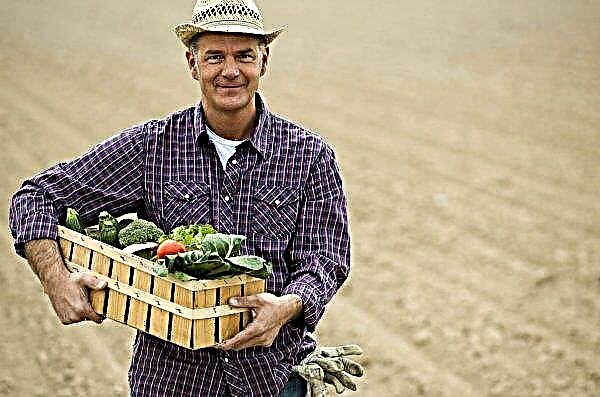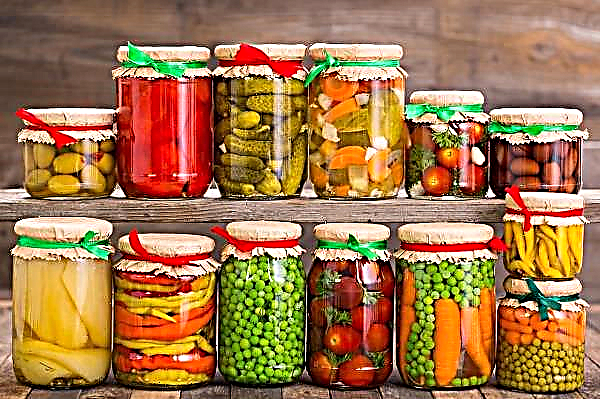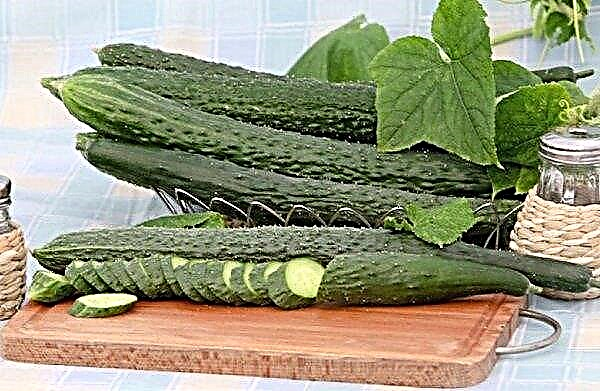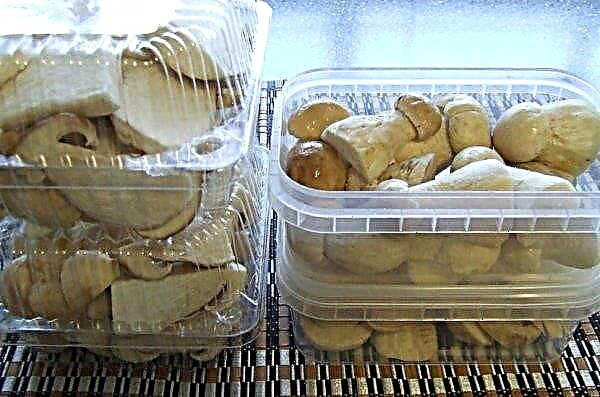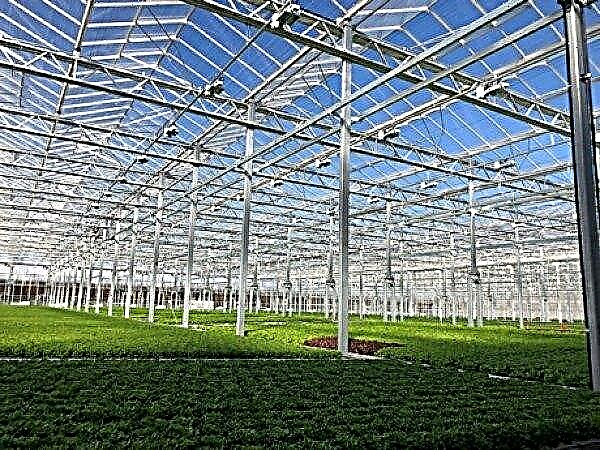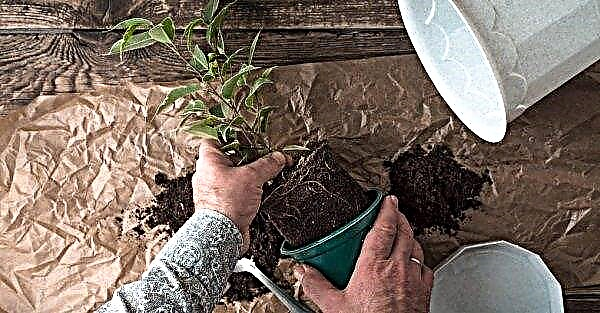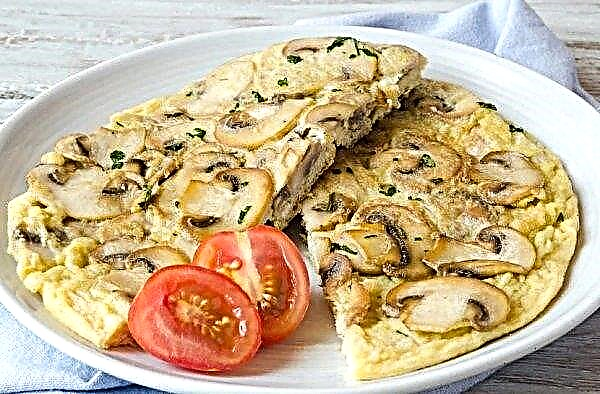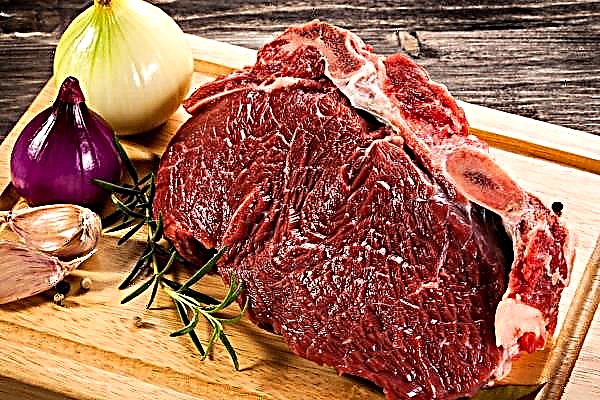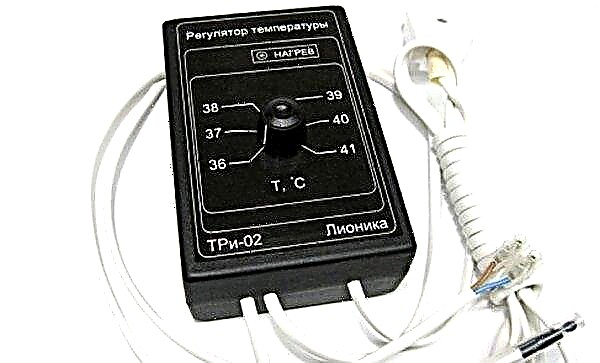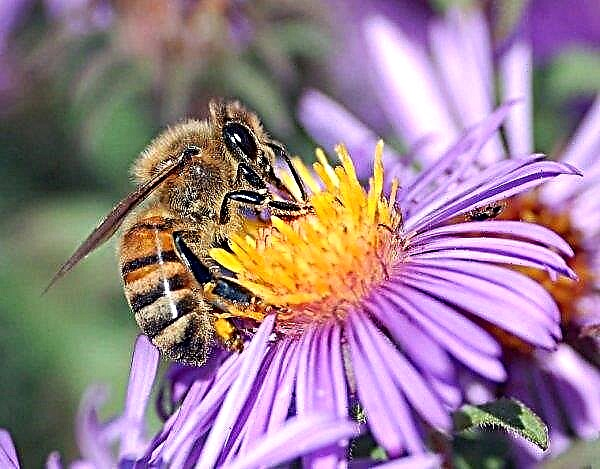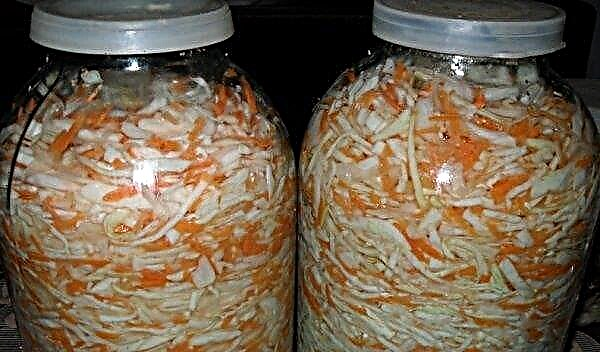Pear variety Tenderness has gained its popularity due to its high productivity, as well as aromatic fruits. They have a special rich taste, so the pear is an ideal option for making compotes, preserves, dried fruits and other products. Next, all the advantages and disadvantages of the Tenderness variety, as well as the technology of its successful cultivation, will be examined in detail.
Botanical characteristic
Pear Tenderness was bred in Russia with the help of crosses of such productive hybrids as Klappova Lyubimitsa and Tema. The variety obtained as a result of this has incorporated all the most favorable qualities of mother plants, becoming one of the best assets of the Russian selection school.
This plant is a quite tall tree up to 6 m high. The trunk is powerful, cylindrical in shape, the bark has a characteristic dark brown hue. The crown of the hybrid has an average density, as well as a narrow pyramidal shape. It is formed by massive skeletal branches directed at right angles. The leaves of the pear are oval, pointed at the end, dark green with a glossy sheen. Fruits can be used not only fresh, but also used to prepare various dishes
Fruits can be used not only fresh, but also used to prepare various dishes
Fruits have tenderness of medium size, weighing about 150-200 g, wide oval shape. The length of the average pear is in the range of 12-15 cm. In the green-ripe phase, the peel has a saturated lime color, as it ripens, its color changes to bright yellow. On the brightest side of the fetus, a characteristic dark pink blush appears. There is also a pale wax coating on the peel. The pear pulp is dense, oily, with a granular structure. The average plant yield is about 30 kg per season.
Did you know? The homeland of the pear is considered to be South Asia. In Europe, the plant got in the I millennium BC. e., but on the territory of North and South America — just 400 years ago.
The main distinguishing feature of the variety is the taste of the fruit.. They are characterized by a rich pear taste, characterized by a pleasant and moderate sweetness, as well as a slight sourness.
Advantages and disadvantages of the variety
- The main advantages of the variety Tenderness:
- high productivity;
- excellent tastes of fruits;
- crop versatility;
- increased frost resistance (up to –40 ° С);
- resistance to many Pink pests and infections.

- For many years of cultivation, gardeners have identified the following plant deficiencies:
- the pear is not drought resistant;
- to achieve high yields, the variety requires enhanced care;
- after harvesting, the fruits withstand the presentation for no more than 1 month.
Landing and preparation for it
Most pear hybrids are considered unpretentious species that can grow and bear fruit in almost any environment. However, Tenderness requires special conditions for itself, including strict adherence to cultivation agricultural techniques. This is the only way to ensure a high yield of the variety, as well as protect the plantings from all kinds of diseases and parasites.
Optimal timing
Pear seedlings can be planted in the fall (first half of October) or in spring (late - early March). It is best to carry out the procedure in the spring: at this time, an increase in the flow of plant juices is observed, which provides increased rooting. In addition, spring planting makes it possible to prepare a young plant for winter frosts, which at times increases its chances of successfully overwintering.
 The variety is able to bear fruit, regardless of weather conditions. But in order to increase productivity and receive at least 45 kg from the plant, it is recommended to spray the trees during the ovary
The variety is able to bear fruit, regardless of weather conditions. But in order to increase productivity and receive at least 45 kg from the plant, it is recommended to spray the trees during the ovary
Choosing the best seedling when buying
The choice of a quality seedling is the main condition for growing a fruitful pear orchard: This is the only way to ensure good fruitfulness of the plant, as well as the fastest rooting.
To do this, when selecting planting material for pears Tenderness, it must be remembered that a quality seedling:
- not older than 1-2 years;
- differs in a branched rhizome with a diameter of about 60–80 cm;
- preserves soil in the root zone;
- It has no signs of damage or damage by fungi and infections.
Important! When buying a plant, be sure to ask in what conditions it was stored. The seedlings are kept in the shade or in a special refrigerator, since even several hours in the open sun can render it unusable.
Choosing a place to plant a pear
A place under a pear is chosen long before planting. Culture requires a special microclimate for itself, on which not only rooting activity depends, but also future productivity.
An ideal place for planting a seedling should meet the following requirements:
- be in a protected from drafts and well-lit area;
- have a low level of groundwater (not higher than 2.5 m);
- be away from the mountain ash (the center of all kinds of infections);
- located no closer than 4 meters from garden buildings or tree vegetation.
 The plant is thermophilic, requires a lot of sunlight, so the close proximity of other trees that block the light can harm
The plant is thermophilic, requires a lot of sunlight, so the close proximity of other trees that block the light can harm
The pear is not exacting to soil: the plant willingly develops and bears fruit on almost any type of soil. However, the largest yields are observed on well-fertilized clay soils with a high agricultural background.
Landing technology
Before planting, the seedling must be prepared - for this it is soaked for 24 hours in clean water at room temperature. This helps activate the root system and plant metabolism. To increase the effectiveness of the procedure, special growth activating preparations (Kornevin, Zircon or sodium humate) are added to the water.
Soil also requires special preparation - since the fall, the plot is well fertilized. To do this, on 1 m² of soil make:
- 3-4 kg of manure or chicken droppings;
- 3 kg of compost;
- 1 kg of chopped wood ash.
 Before planting, it is recommended to lower the roots of the pear in a bucket with a solution of potassium permanganate, this will not only neutralize the roots, but also protect the tree from many diseases
Before planting, it is recommended to lower the roots of the pear in a bucket with a solution of potassium permanganate, this will not only neutralize the roots, but also protect the tree from many diseases
2 weeks before planting, the soil is fertilized again - for this, the soil under the planting site is removed, and then it is mixed with 2 buckets of sand and rotted manure, superphosphate (1 cup) and potassium sulfate (3 tbsp.). After this, the soil is returned to the hole, and then the area is poured with a solution of lime (2 cups / 10 l of water / 1 m²). Then the soil is well soaked (20 l of water / m²).
They plant a pear in cool weather in the morning. In the prepared area, a hole is created with a depth of about 1 m and a diameter of at least 70 cm. The root system of the seedling is placed in the hole, and then it is densely sprinkled with soil. Next, around the plant, create a near-stem circle with a diameter of about 50 cm and a depth of 5–10 cm. After this, the seedling can be watered: about 10–12 liters of water are poured into the trunk circle.
Video: Planting a pear seedling
Care Features
Pear Tenderness requires painstaking care in order to obtain a good crop of high quality. In addition to loosening and weeding the soil, watering, and also feeding, the plant needs periodic pruning of the crown, as well as treatment against all kinds of pests and infections.
Watering
The intensity of irrigation depends on the average daily air temperature and season. In spring and autumn, pear is watered 1 time per month, in hot summer, the watering rate is increased to 2-3 procedures per month.
The amount of water added depends on the age of the seedling. No more than 10-15 liters of water are sufficient for young plants; as the tree grows, the amount of liquid is increased to 30 liters. Adult pears are watered until the water completely dries the topsoil to a depth of 60–80 cm.
For irrigation use only clean and well-maintained water, heated to air temperature. In spring and autumn, water is brought under the root, in the trunk circle, in summer, watering under the root is alternated with sprinkling.
Important! Sprinkling is carried out only in the early morning or evening — otherwise, water droplets on the foliage under intense solar radiation will result in burns of green mass.
The main mistakes that are made when watering pears Tenderness:
- watering the next day after rain (should be at least 3 days after rainfall);
- lack of a trunk for irrigation;
- excessive moisture (the soil on the site should periodically dry out);
- neglect of watering after planting a seedling.
 It is believed that it is best to irrigate in the morning or in the evening when there is no direct sunlight.
It is believed that it is best to irrigate in the morning or in the evening when there is no direct sunlight.
Fertilizer application
For 1-2 years after planting, the pear does not need fertilizer. Subject to all the rules for soil preparation, the previously made compounds are enough to provide the tree with all the necessary substances. Therefore, top dressing begins only 3 years after planting, and then spend annually.
For safe growth and fruiting, the pear needs accessible forms of potassium and phosphorus, so potash-phosphate top dressing is an ideal basis for high-quality fertilizer plants. They are introduced in two stages:- The first is carried out at the beginning of flowering, using a solution of potassium nitrate (30 g / 10 l of water) for this. The norm of the working solution per plant is about 5 liters.
- The second time the fertilizer is performed in the phase of active formation of the fruit. A superphosphate solution (50 g / 10 l) is used as top dressing, while about 7 l of working fluid is applied under one plant.
 The variety needs top dressing. There should be 2 for the entire vegetation process
The variety needs top dressing. There should be 2 for the entire vegetation processPruning
The pear is formed during 5-6 years from the moment of planting.. During this period, the main shoots grow on a tree, on which fruit branches later appear.
The first pruning procedure is done immediately after planting - all branches are shortened to one length, while trimming them by at least a third. The next time the shortening is done in June. The three most developed shoots are left on the seedling at the same level, the remaining branches are cut. As the pears grow on the tree, another 4-5 tiers of branches are formed as in the first.
Also, the pear necessarily needs sanitary pruning.. It is carried out before the buds open or after the leaves fall. Eliminate all unnecessary, diseased or damaged branches. From about 4 years after planting, young pears begin to thin out (helps to accelerate the ripening of the fruit). Spend it in the early spring or fall, after harvesting the fruits.Important! All places of cuts on the plant must be treated with crushed charcoal — this will help protect the pear from fungal infection.
 In early March, you need to remove damaged and dry branches that absorb too many nutrients. At the end of October, you should thin out the crown and slightly cut its height
In early March, you need to remove damaged and dry branches that absorb too many nutrients. At the end of October, you should thin out the crown and slightly cut its height
Winter preparations
Despite frost resistance, all representatives of the tenderness variety require specific preparation for the winter, especially in the first 5 years after planting. They approach it after the leaves fall, in the second half of autumn.
Prepare the plant for winter in two stages:
- First wrap a tree trunk: for this use straw, hay or reeds. The material is tightly laid around the trunk with a layer of at least 10 cm, and then firmly tied with a rope. As an alternative, a dense burlap or spunbond can be used to cover the trunk.
- Next, mulch the trunk circleusing straw, hay, moss, pine needles, tree bark and other natural materials for the procedure. In this case, the mulch layer must be at least 5-10 cm.

Grade Diseases and Pests
The main diseases that affect the variety Tenderness are:
- scab - You can overcome the disease by spraying with colloidal salt (20 g / 10 l of water);
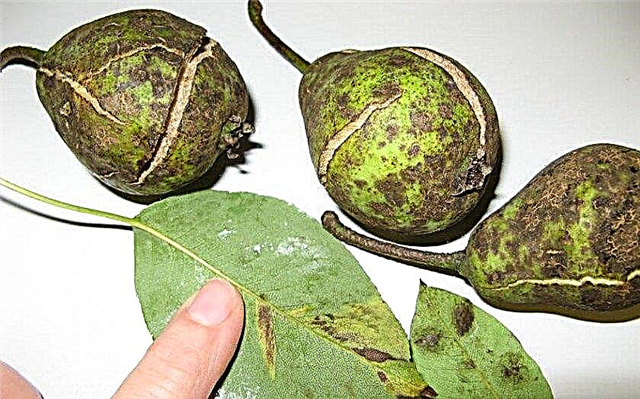
- bacteriosis - You can cope with the infection by treating with a 2% solution of potassium permanganate (potassium permanganate);

- fruit rot - the disease can be eliminated with a solution of wood ash (1 tsp / 10 l of water). The fruit is carefully treated with liquid, as well as the plant itself.
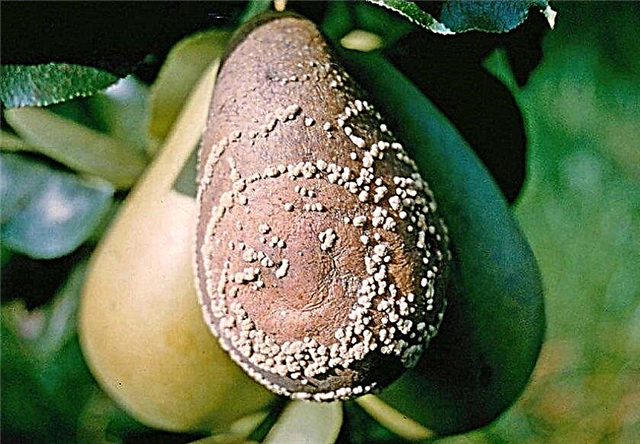
Of all kinds of pests on a pear, aphids and beetles are most common. You can overcome aphids with the help of Oxychom: with a working solution (40 mg / 10 l of water), the affected plant is treated twice, with an interval of 14 days. An infusion of cayenne pepper (1 g / 10 l of water) will help get rid of beetles - all affected parts are sprayed with a remedy. Carry out such work as necessary, as pests appear.
Did you know? Pear wood is the best raw material for the production of all kinds of household items. Since ancient times, it has been used for the manufacture of architectural rulers, wooden tools and even utensils, which are not inferior to ceramic in durability.
Harvesting and storage
Harvesting is carried out in the second or third decade of September. The ripeness of the fruit is determined by several signs. First of all, this is indicated by the growing season, as well as the characteristic color of pears - they become saturated yellow, and on the most illuminated parts of the fruit a characteristic blush of dark pink color appears. The fruits are picked by hand: in the phase of full ripeness, they are perfectly separated from the branches.
After harvesting, the crop is laid out in small wooden or plastic boxes, in one layer. Pears are stored in a basement or cellar: at a temperature not exceeding + 10 ° С and humidity of about 85%, they are able to successfully maintain their freshness for no more than 1-2 months. However, for this, they should not find a separate place, away from other fruits or vegetables, and also place at a distance no closer than 15 cm from the walls of the store (otherwise the crop will be affected by fungi). The crop is stored in the refrigerator for no more than 3 weeks.
Tenderness is one of the most popular pear varieties, which has gained widespread success among plant growers. The plant is resistant to many characteristic diseases and insect pests, and its fruits are distinguished by excellent taste. Everyone can grow this variety: for this you need to adhere to the recommendations described above.




